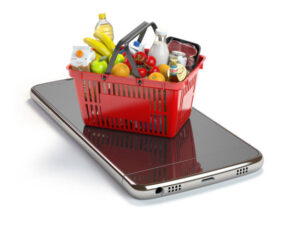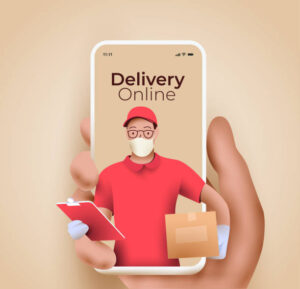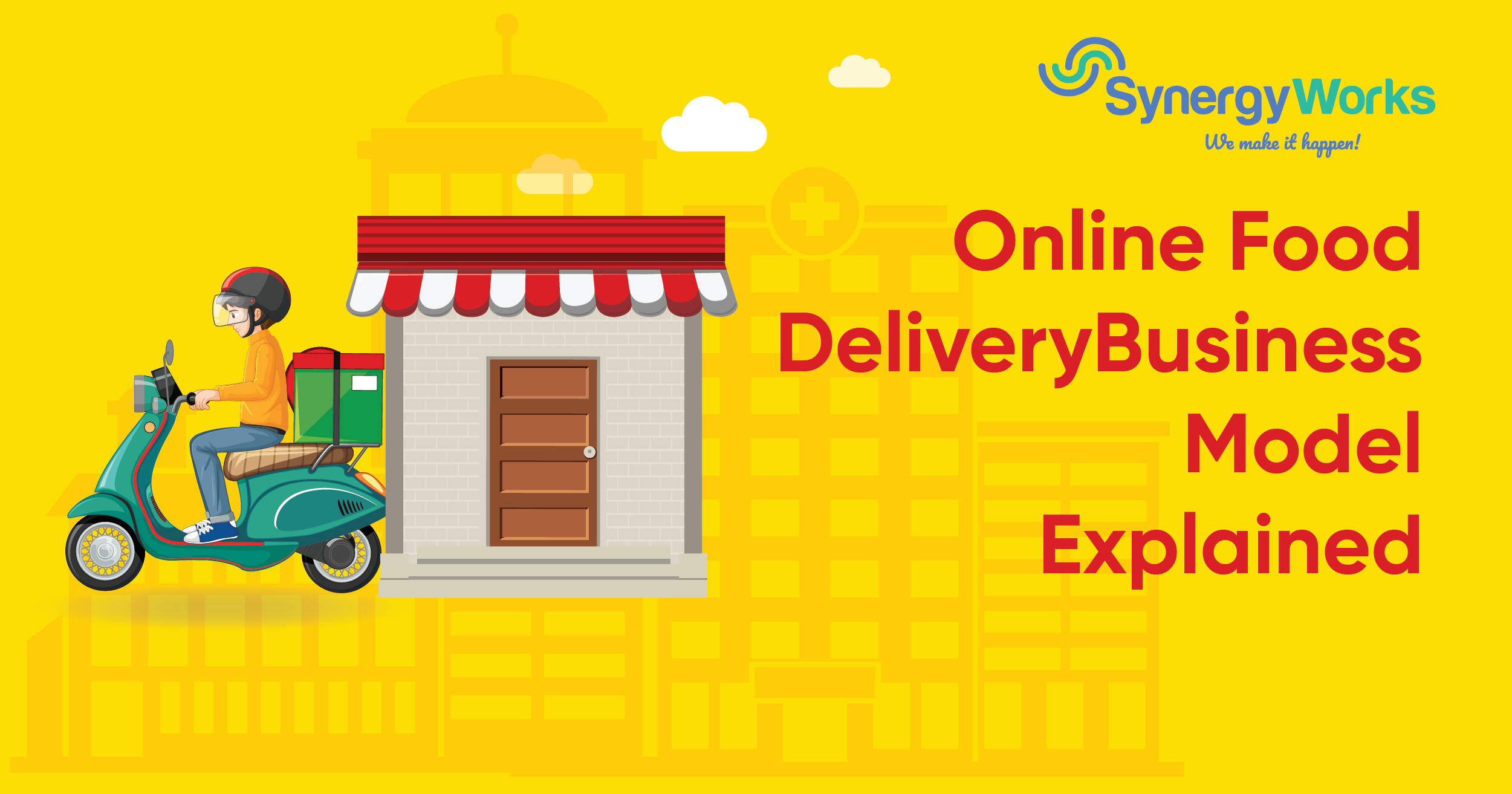In recent years, the online food delivery business model has seen a meteoric rise in popularity. From small-scale local restaurants to large international chains, businesses are increasingly turning to digital solutions for their customer’s convenience and satisfaction.
With this surge of interest in the industry, it is essential that those considering starting an online food delivery business have a comprehensive understanding of how it works.
In this comprehensive guide, we will give readers a detailed overview of the ins and outs of the online food delivery business model, from industry estimates to the types of food delivery business models available.
A Look at the Growing Online Food Delivery Business Market

The online food delivery market is undergoing phenomenal growth, especially after the COVID-19 pandemic. Consumers worldwide are increasingly turning to online food delivery for convenience and satisfaction. After all, why wait in line for hours to get your favorite food when you can have it delivered to your doorstep?
This is evident from the numbers: the global online food delivery market was valued at $221.65 billion in 2022 and is expected to expand at a CAGR of 10.3% from 2023 to 2030. According to industry estimates, online meal delivery revenues are projected to reach $220 billion by the end of 2023.
This growth is driven by several factors, including the increasing penetration of smartphones and internet connectivity, tighter regulations around food safety, and rising consumer demand for convenience and low-cost meal options.
As such, understanding the different types of customers when it comes to online food delivery is vital. Generally, there are two types: convenience-seekers and value-seekers. Convenience-seekers prioritize speed and ease of ordering, while value-seekers prioritize cost savings over convenience.
Types of Food Delivery Business Models
When it comes to online food delivery business models, there are three main types, with each having its own advantages and disadvantages. Here’s a closer look at each one:
1. Platform To Consumer Model
The platform-to-consumer model, also known as the order-only model, is one of the most popular food delivery business models. This model involves an application that links customers with restaurants and cafes to provide them with restaurant-cooked meals.
In this model, restaurant owners manage their own delivery services, while your app is solely responsible for taking orders and distributing them to the eateries. The logistics are out of your hands in this type of model.
As such, you can expect a 20%-30% cut of order value from vendors for each transaction you facilitate on their behalf. Additionally, due to its nature as an intermediary between consumers and restaurants, you’ll need to build relationships with multiple suppliers to tap into larger markets.
2. Delivery Service Aggregator Model

The delivery service aggregator model is another increasingly popular type of food delivery business. This model involves an app that links customers with restaurants and cafes to provide them with restaurant-cooked meals.
However, unlike the platform-to-consumer model, this model takes on additional responsibility for the logistics and deliveries of these orders. The restaurants do not have to worry about maintaining a fleet of vehicles or having enough staff available for deliveries; all they have to do is focus on providing quality food. Meanwhile, you can use your already established client base to drive sales in different markets.
Depending on your needs and resources, you can choose between point-to-point or milk-run delivery modes. Point-to-point delivery involves having a driver pick up orders from each restaurant and deliver them to the customer. In contrast, with milk-run delivery, a single driver picks up orders from multiple restaurants in one go and delivers them all at once.
3. Full-Stack Model
The full-stack model is a more comprehensive solution that takes care of all aspects related to food delivery. It involves running an on-site kitchen that prepares meals for delivery or takeout orders. These kitchens, also known as “ghost” or “cloud” kitchens, are set up in strategic locations and do not facilitate dine-in.
The biggest advantage of this model is the level of control it gives you over every stage of the process: from selecting ingredients and creating recipes to packaging and writing labels for products.
Additionally, this type of business model can be adopted by both individual customers and business clients who need to deliver healthy meals straight to workplaces. Plus, with such high control over your operations, you can run special meal programs, create metabolic meals tailored to specific dietary needs, and even deliver nutritious treats straight to office buildings.
Which Food Delivery Business Model is Right for You?
When trying to decide which food delivery business model is right for you, there are a few things to consider.
1. Available Capital and Resources

The amount of capital and resources you have available is important. The platform-to-consumer model requires little start-up capital but relies heavily on relationships with various vendors and suppliers to succeed. On the other hand, the delivery service aggregator and full-stack models require more investment in terms of capital and human resources.
2. Type of Service You Want To Offer
You should also consider the type of service that you wish to offer customers. For example, if convenience is your priority, then the order-only platform model may be the best option due to its ease of use for customers.
If speed and reliability are paramount, then the delivery service aggregator or full-stack models could be your best bet because they give you more control over logistics.
3. Your End Goals

Finally, it’s important to think about your end goals for your business.
Platform-to-consumer can offer quick returns on investments due to its low start-up costs and minimal administrative workloads compared to other models; however, it may not yield as much long-term benefit since it only facilitates orders between customers and vendors rather than providing its own goods or services.
The integrated or aggregator models can provide more growth potential in terms of market reach since they offer their own goods or services as part of their operations; this means that they can tap into larger markets while still keeping costs down by outsourcing deliveries to third parties where possible.
Also Read Guide to Build an Ecommerce App from Scratch
Want To Create Your Own Food Delivery Business? SynergyWorks Can Help
If you’re considering starting your food delivery service, your main priority should be the food delivery app itself. A successful app should be user-friendly and feature-rich, with intuitive design, reliable delivery tracking, and secure payment options.
At SynergyWorks, we have the experience and the expertise to help you create the perfect app for your food delivery business. Our team of experienced software developers can create custom applications with robust features such as GPS order tracking, real-time notifications, and more.
Get in touch with us today to learn more about how SynergyWorks can help you get your food delivery business off the ground – and take it to greater heights.
About Author
Shikha Taman
Shikha Taman is the founder & CEO of SynergyWorks Solutions. With over 12 years of experience in the industry. She has extensive knowledge of software engineering, project management, client management, and business strategy. She strives to ensure all the products developed are always up-to-date with materializing technologies to remain competitive in today’s marketplace.




